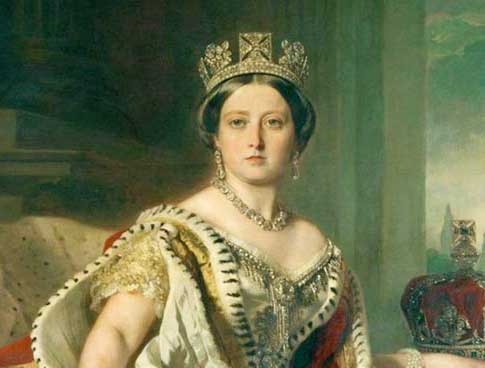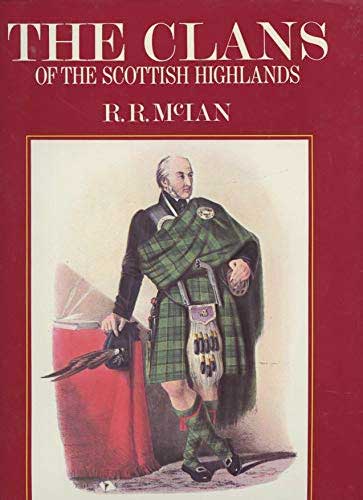By Jeannie Campbell MBE

In 1848, a new society was formed in London and several papers reported on the founding: “Within the last few months a new society has been formed in London; not strictly for Scotchmen, but of the friends and admirers of Scotland. The new society takes the name of the Scottish Archers. The Marquis of Breadalbane holds the office of Captain-General; Viscount Drumlanrig is Lieutenant-General. Among the honorary directors are the Sheriff of Lanarkshire; Cluny Macpherson; Lochiel; Major-General Sir William Morrison, K.C.B.; Colonel Sir Edward Campbell, C.B. etc.
“The encouragement of the national sports and games of Scotland is one of its principal objects, and also the support of the Scottish charities in London. The society, we observe, contemplate weekly meeting for the practice of the craft, in a season ranging from April till the end of September; and one grand field-day to be held in June of every year, when in addition to the competition of the archers, prizes will be awarded for the best performance on the bagpipe, for Highland dances, and for all the national sports.
“All the successful competitors at the local meetings in the north, such as the northern meeting and the Braemar and Athole gatherings, are to be specially invited to London to contend for prizes varying from five to fifty guineas … We learn that the society has already made so much progress that the 20th of June 1849 – the anniversary of Her Majesty’s accession to the throne – has been fixed upon as the grand field-day.”
The Society propitiated public opinion by establishing itself on a charitable basis, for its profits were to be distributed among the benevolent institutions of London, founded for the relief of Scots in distress there.
By March 1849, the new society was referred to as the Scottish Society of London. Over the following weeks more information was issued. Apart from the archery, for which competitors were to appear in uniform, “the prizes for the other sports and pastimes will be restricted to those who shall appear in the ancient Caledonian costume, kilt or trews, but as this is intended as a Grand Competition for Championship, none will be placed on the list of competition who have not already been distinguished at local meetings; candidates must therefore name the Games in which they propose to compete and the places where they have already distinguished themselves.
“As the Scottish Society is established for the purpose of encouraging out-of-door sports and pastimes in the provinces as well as in the neighbourhood of London, directors of local societies are invited to enrol their principal competitors, as prizes will be sent to be competed for in these districts from whence the successful parties come.” In addition to the Gathering in London, the society supported other gatherings in Scotland with donations and medals and campaigned for the preservation of Highland dress as everyday wear.
The society’s Gathering was the first to be held in London in a form that is recognisable as a gathering as we are familiar with today.
A notice of the event appeared in the Perthshire Advertiser on June 14, 1849: “Highland Gathering in London. It is due our Highland friends to say that they are invited to appear in London the 20th instant, in ‘the garb of old Gaul’ and compete for prizes before the beauty and chivalry of the great metropolis. This is brief notice — too brief, we admit; but the fault is not ours. The Scottish Society must bear the blame; for while officially announcing the ‘grand fête’ in the Edinburgh and other southern papers last week, they omitted make it known through the only channel by which it could reach hundreds of the Highlanders of Perthshire. But better late than never: and now we proceed briefly to indicate a few particulars of the approaching exhibition.
“It takes place, as we have said, the 20th and 21st instant, so there will be length enough of daylight at all events. We would forewarn our Highland friends, however, that they will not find the days so long in London as on their own hills, by at least an hour and a half. The ‘fête’ is under the auspices of the Scottish Society, and will come off in a grand park belonging Lord Holland, at Kensington. It is announced as a ‘competition in archery (open to all England, Scotland, and Ireland), and the Scottish national sports and pastimes.’ There will first prizes for the successful competitors in footrace. 1,200 yards; hurdle footrace, 400 yards; throwing’ the hammer (16lb); putting the stone (18lb); tossing the caber; Sword Dance; reels and strathspeys. For performances on the bagpipes there are three prizes — first, a medal and £l2; second £10; third, £8. The prizes will be awarded by the Marquess of Breadalbane at a grand banquet on the evening of Thursday, the 21st instant.”
There would also be a competition for the boys of the Caledonian Asylum with prizes of £3, £2 and £1, and prizes for the best-dressed competitors (ornaments not to be considered) of £10 for first and £6 for second.

On the first day of the Games, proceedings started with archery then piping. There were 12 pipers headed by Angus MacKay and the pipers of the Marquis of Breadalbane, the Duke of Argyll and other leading Scottish families, including: John MacKenzie and his son Donald, Roderick MacKay (brother of Angus), John MacBeath (piper to the Duke of Sutherland), Alexander Cameron (piper to the Hon. William Scarlett), J. McLeod (Duke of Argyll’s piper), Duncan Campbell (Duke of Atholl’s piper), Charles McDonnell (Captain Charles Forbes’s piper). They marched round the enclosure playing The Campbells are Coming and Highland Laddie, among other tunes.
The reader will be well aware of Angus MacKay, John Bàn MacKenzie and his son, but of the others mentioned:
• Roderick MacKay (1810-1854), Angus’ brother, was the second son of John MacKay, Raasay. He was Piper to Major Colin C. MacKay of Arisaig, then to James Moray of Abercairney. He won first prize at the Edinburgh competition in 1832.
• John MacBeath or MacBeth was Piper to Highland Society of London in 1829 and later Piper to the Duke of Sutherland. He was a prizewinner at the Edinburgh competition in the 1830s.
• Duncan Campbell (1816-1860) was Piper to the Duke of Atholl from 1842-48, then in 1849 piper to William Campbell of Tulliechewan Castle, before being appointed Piper to Sir Charles Forbes of Newe (1850-1858/9). He then moved to Edinburgh where he was Piper to the Highland Rifle Volunteer Company and a night watchman at the Royal Bank. He won the Northern Meeting Prize Pipe in 1850.
• Alexander Cameron (1824-1872) was the brother of Donald Cameron. He was Piper to Sir James MacKenzie at Rosehaugh, then Piper to Earl of Seafield at Cullen by 1846 when he won the Prize Pipe at the Northern Meeting. At the 1849 Northern Meeting he was described as Piper to Mr Scarlett, Inverlochy. By 1851 he was serving in Ireland with the 71st Highlanders; then became Piper to Malcolm of Poltalloch. After teaching in Edinburgh for a time in the 1850s he settled in Greenock as a hotelkeeper and was Pipe Major of the Greenock Volunteers from its formation in 1859-60. He won the Northern Meeting medal for Former Winners in 1862 and died in Greenock in 1872. William Scarlett (1826-1892) was the son and heir of Lord Abinger of Inverlochy Castle. He became an officer in the Scots Fusilier Guards and served during the Crimean War.
The events included a race of 1,600 yards for which eight men started, the greater number of them bareheaded and barefooted, and wearing nothing but their shirts and kilts. Several bands were present including the juvenile band of the Caledonian Asylum who maintained a creditable competition to that of the Coldstream and Fusilier guards. One newspaper reported: “Angus MacKay, the Queen’s piper, in a panoply of gorgeous ornament, marshalled the juvenile piper band of the Caledonian Asylum, marching at their head, and having at his side a little piper, so small that he might have put him in his sporran. However the little fellow blew with might and main, although he was occasionally disabled by participating in the infection of laughter produced by his diminutive figure. He was scarcely bigger than Tom Thumb.”
The Gathering was attended by many thousands of people, who, although chiefly English, were said to be very interested in the Games.
Although the prizes were not announced until the banquet on the evening of the following day the result of the piping contest was: 1. Roderick MacKay (Piper to Mr MacKay of Arisaig), a medal and 12 guineas; 2. Donald MacKenzie (Taymouth Castle), £10; 3. Donald MacInnes (£8); 4. C. MacDonnell (Piper to Captain Forbes), £5.
For the best dressed Highlander first prize went to John Bàn MacKenzie, piper to the Marquis of Breadalbane, second to James McLennan, piper to the late Campbell of Troup and third to Donald MacPherson, head keeper to Sir Henry Meux. Donald MacInnes was from Lochaber, he was piper to Colonel MacNeill of Barra and won the Edinburgh Prize Pipe in 1841.
The result of the Sword Dance was: 1. Alexander Cameron; 2. Angus McIntosh. For Reels: 1. Donald McCraw; 2. Donald MacKenzie.
The judges for the pipers and dancers were: Sir James J. R. MacKenzie of Scatwell in the chair; Cluny Macpherson; The Chisholm; Macallister of Macallister; R. R. McIan; J. C. Macphee; and Andrew Thomson.
Robert Ronald McIan (1803 – 1856), was a Scottish actor and painter and a fierce Jacobite. He was born in Scotland, and became an actor with the joint company of the Theatre Royals in Bristol and Bath, before making his way to London. He gained a reputation for playing Highlanders on the stage, at a time when the novels of Sir Walter Scott had revived interest in Highland culture.
Eventually, he gave up the stage to devote himself to painting. He is best known for his illustrations in The Clans of The Scottish Highlands, published in 1845 on the centenary of the Jacobite Rising, with text by James Logan. It proved so popular that it was reissued in 1857, after his death. His depictions of clansmen fanned the romantic revival of interest in Gaeldom that was led by Queen Victoria, to whom the book was dedicated.
On the second day of the Games, there were some distinguished visitors. The Duke of Wellington walked through a double file of Highlanders with drawn swords. As soon as the Duke was recognised by the assemblage a loud and general shout of acclamation rent the air, the pipes sounded and the military bands struck up The Conquering Hero; hats and handkerchiefs were waved on high.
The Duke took his seat in front of the grandstand, between the Countess of Jersey and Lady Clementina Villiers, who gracefully did the honours of the fête, the sports recommenced. Half a dozen boys of the Caledonian Asylum appeared upon the platform and danced a strathspey then the Sword Dance; Lady Jersey having explained to the duke the meaning of the crossed swords, he observed that, “the Highlandmen knew how to put their claymores to a better use when the occasion served.”
Queen Victoria, accompanied by Prince Albert and three of their children, the Prince of Wales and two of the Princesses, entered the ground at precisely four o’ clock in an open carriage. They drove to the centre of the arena, the horses were taken out and the Royal party watched the dancing and sports from their carriage, staying for more than two hours.
At the conclusion of the sports, a banquet was held in a pavilion erected on the grounds. The prizewinners were announced and those present were informed that Lord Holland had agreed to allow the use of his park for another gathering the following year.
The Games were repeated the following year (1850), again in Lord Holland’s park on July 1 and 2. In addition to the events held the previous year ,there was wrestling and violin playing and a contest between broadsword and targe versus bayonet, won by the broadsword and targe with a score of four to one. Three stands had been erected and a royal stand for some of the elite of the aristocracy. The pipers and the boys from the Caledonian Asylum played.
In a new arrangement for the piping contest, the judges sat on one side of a large screen and were prevented from seeing the players who had drawn numbers for their order of play. The first prize was awarded by a majority to Lord Lovat’s piper and the second to Major Scarlett’s piper. The contest between the broadsword and targe against the bayonet was suspended when it was announced that Queen Victoria was on her way. The Highland bodyguard instantly formed in procession to receive the Queen who arrived by carriage at accompanied by Prince Albert, the Prince of Wales and the Prince of Prussia. The Royal piper, Angus MacKay played The Glen Is Mine as she was received by the Marquis of Breadalbane, Lord Chamberlain of the Household and President of the Scottish Society, who conducted the carriage to the centre of the field. There was then a special performance of the Gillie Callum danced by John MacIntyre for the Royal party, then the contest between sword and targe and bayonet. The Royal party left after spending an hour and a quarter at the ground.
On the second day, among the distinguished visitors were the Nepalese princes who were received by a specially appointed bodyguard and conducted to seats in Lord Holland’s private stand where they remained for more than an hour. In the evening a banquet took place in the Freemason’s Tavern, and prizes were distributed, A report said: “Orpheus himself could do no more. As Vauxhall is to be devoted to a Scotch entertainment on Thursday, our countrymen may well think that they have made a very fair share of noise in London for one week.”
The results in the piping were:
Ceòl Mòr – 1. Alexander Campbell, piper to Lord Lovat (Bodaich na Briogais); 2. Alexander Cameron, piper to the Hon. Captain Scarlett; (A Ghlas Mheur); 3. Donald Mackenzie, Taymouth Castle (Cumha Mhic an Toisich).
Quicksteps – 1. Donald Mackenzie (The Seaforth Highlanders); 2. Alexander Cameron (The Forty-Second Highlanders’ Farewell to Gibraltar).
Reels – 1. Donald MacInnes (Tulloch Gorm); 2. Sergeant Neil Matheson, Pipe Major of the 72nd Highlanders (Cabar Feidh).
Neil Matheson was born about 1805 in Sutherland. He served with the 72nd from 1839 and was Pipe Major1840-48. He served in Gibraltar 1844 and was invalided home from the West Indies in 1848. He rejoined in 1852 and served in Nova Scotia 1854, in Malta 1855 and the Crimea and was invalided home 1855 and discharged 1856.
The judges of pipe music (and dancing) were Cluny Macpherson, Davidson of Tulloch, Macallister of that Ilk; Mackenzie of Scotsburn; Mr Bain, Secretary to the Highland Society of London; R. R. MacIan; Cameron Macphee; and Messrs. Sinclair (Lochearnhead), Jeffrey and MacDonald.
• Continues.







